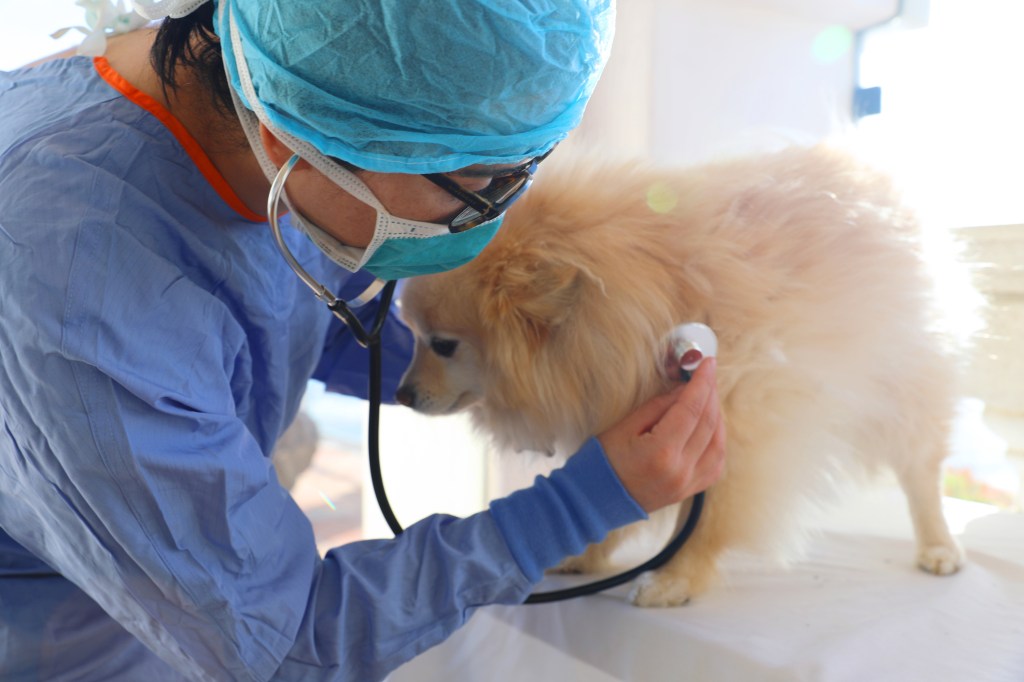There are plenty of reasons why some people prefer small dogs. It could be due to portability, less space requirements or lower energy levels. The appreciation for small breeds has rapidly increased with the new trend of teacup dogs and puppies.
Teacup dogs have become incredibly popular these days, and breeders are trying to meet the demand. Now you must ask yourself, is it okay to get these super tiny dogs? From unethical breeding practices to health problems, there are several things to consider before getting a teacup dog.
What are teacup dogs and puppies

“Teacup dog” refers to miniature variants across various dog breeds. The reality is that there’s no official category for a “teacup” puppy. It’s a term used to indicate a puppy that is smaller than usual. While it might not sound concerning, imagine a typical chihuahua puppy’s size—now consider it half as small as their usual size.
Teacup dogs are not breeds in themselves but rather the result of breeders aiming for the tiniest versions within a breed. They are also known as micro dogs or pocket dogs.
Popular teacup dog breeds
Yorkshire Terriers, Chihuahuas, Maltese, Poodles, and Pomeranians are frequently available in a teacup size.
Let’s take a look at the ideal weight of these breeds:
- Yorkshire Terrier – 4 to 6 pounds
- Chihuahua – 3 to 6 pounds
- Toy Poodles – 4 to 6 pounds
- Pomeranians – 3 to 7 pounds
- Maltese – 4 to 7 pounds
Breeders of teacup puppies aim to lower these weights further. Although there’s no set weight for a teacup dog, it’s typical for adult teacup dogs to weigh significantly less than 4 pounds.
Additionally, some teacup dog breeders offer mixed or “designer” teacup breeds, such as teacup Pomchis (Pomeranian-Chihuahua mix) and teacup Maltipoos (Maltese-Pomeranian mix).
How teacup dogs are bred
Due to the influence of social media and celebrities, many people are interested in getting teacup dogs, and breeders want to cater to their needs. However, this breeding often occurs without adequate consideration for the puppies’ well-being.
In order to produce these tiny teacup puppies, breeders target the smallest pups from their litters. The once-dismissed “runts” – previously viewed as less desirable and less healthy – become sought after in these instances. The breeders obtain smaller-sized puppies when they breed these runts from different litters. However, this practice can also lead to unexpected health problems.
This is not enough, though. Some breeders even attempt to shrink the puppies’ size further by restricting their nutrition early on. This malnourishment can hinder their growth, preventing them from reaching a healthy adult size.
It’s important to look for a responsible breeder when buying a puppy. Ethical breeders prioritize puppy health over profits, engaging with potential owners in person, allowing visits to their breeding facilities, and introducing the puppy’s parents.
The breeding dogs should ideally undergo recommended health tests for their breed, like hip X-rays or heart ultrasounds. Furthermore, puppies should receive comprehensive medical care before you take them home, including parasite exams, deworming, and vaccinations. These practices are a hallmark of responsible breeding.
Instead of purchasing a puppy from suspicious breeders online or offline, you can visit your nearby shelters and adopt a dog.
Breeding issues with teacup dogs

Teacup dogs face significant health challenges when not bred following specific guidelines. Before getting a teacup dog from a breeder, you must consider some points to ensure that you welcome a healthy dog to your home.
Genetic Health
As per Bonnie Bragdon, the co-founder and president of the Independent Veterinary Practitioners Association, being purebred doesn’t guarantee compliance with breed standards. She says, “Individual dogs who are smaller than recommended breed standards are red flags and could mean the individual is a mistake or narrowly bred.”
By “narrowly bred” dogs, Bradgon means specific pedigree breeds facing genetic issues that arise from limited familial lines, akin to inbreeding. To address this concern, most dog breed parent clubs enforce strict genetic testing, which professional breeders must follow.
When the parent dogs are healthy and raised with care, their puppies should consequently be healthy. However, if a breeder neglects proper testing guidelines, the breed-specific heritable diseases and other medical disorders could lead to heightened complications for these small canines.
Jenna Stregowski, a registered vet technician, emphasizes that indiscriminate breeding has the potential to compromise the entire lineage. Indiscriminate breeding focuses solely on the ‘good’ traits of parent dogs without considering the ‘bad’ ones,
Stregowski points out that “line-breeding” can intensify the concentration of genetic traits. She states, “So if Mom and Dad both have genes that increase the likelihood of patellar luxation, it greatly increases the chance of that dog having the disease and/or passing it to future offspring.” Stregowski further notes, “This becomes more likely with each generation and applies to both desirable and undesirable traits.”
Bragdon emphasizes that understanding the genetic background becomes particularly crucial when dealing with teacup crossbreeds. For instance, if the father was a petite Pomeranian and the mother was a small Chihuahua, both with genetic dental issues, the puppy might face an elevated risk of dental issues.
Focusing on Size and Appearance in Breeding
For producing teacup dogs, breeders strive for extremely small sizes, and that is another cause for concern. Some breeders may recklessly cross the smallest puppies in a litter to create smaller dogs or, worse, ones with health issues, aiming to maximize litter size and profits.
Stregowski explains that the runt of the litter frequently has other congenital issues. This might happen due to insufficient nutrients or oxygen during gestation, particularly in larger litters where the placenta couldn’t adequately support all fetuses. Additionally, these puppies tend to be weaker and struggle to compete with littermates for resources, especially maternal milk. Should they survive to breeding age, their offspring are more prone to inherit their adverse genetic traits.
To make matters worse, dishonest breeders sometimes subject female dogs to malnourishment to prompt the birth of smaller offspring.
Moreover, there’s a practice of breeding two teacup dogs to produce what’s termed micro puppies, weighing around 2-3 pounds. Teacup mothers generally have a hard time during the pregnancy and delivery (referred to as whelping) of these exceedingly tiny pups. Consequently, the health of both the mother and her offspring is at risk, which can lead to birth defects and other challenges.
Unethical breeders tend to overlook health considerations when creating teacup crossbreeds only for a specific aesthetic, like husky teacup dogs with attractive blue eyes. Huskies typically weigh between 35 and 60 pounds, while most toy breeds weigh under 10 pounds. The Humane Society describes the practice of “breeding down” to attain a designer appearance as a common tactic in puppy mills.
Health issues with teacup dogs

Teacup dogs are prone to several health issues that can negatively affect their lives. As a result, taking good care of these dogs as a pet parent also becomes challenging. Here are some of the most common health problems in teacup dogs:
Hypoglycemia
The prevalent health concern among young teacup dogs is hypoglycemia, that causes low blood sugar levels. Due to their diminutive size, teacup puppies lack substantial energy reserves, making them susceptible to life-threatening hypoglycemia if they go without food for as little as six to eight hours. Feeding them energy-rich, easily digestible puppy food every four to six hours is essential. In some cases, they might require canned food since their mouths and teeth might not be sufficiently developed to handle dry food.
Liver Shunts
Another common medical issue in teacup puppies is liver shunts. In this condition, abnormal blood vessels develop in the liver, which doesn’t allow the liver to eliminate toxins from the bloodstream. As a result, dogs suffering from this condition often face stunted growth, correlating to the teacup puppy’s small size. In addition, they may have neurological problems like disorientation, circling, and even seizures. While surgical intervention might resolve some cases, others necessitate ongoing medical care throughout their lives.
Hydrocephalus
Many teacup dogs are known for their adorable dome-shaped heads. These animals can be suffering from a congenital condition, hydrocephalus, where excess water accumulates in the brain. The water pressure can harm the brain, resulting in blindness, behavioral problems, and other neurological challenges. Surgery might be the only option in many cases to drain away the water from the brain.
Dental Diseases
Since teacup dogs’ mouths are too small in size, it can lead to difficulties in their teeth growth. It can cause crowding and the persistence of baby teeth. Consequently, this can result in an accumulation of plaque and tartar, increasing the chances of dental issues like gingivitis, periodontal disease, and more.
Other Diseases
These miniature canines are subjected to many other health problems, such as heart disease, tracheal collapse, orthopedic disease, hypothermia, fragility, challenges in administering medications, and difficulty in anesthetizing and operating on them.
Is it ethical to get a teacup dog?
With so many complications involved in getting a teacup puppy, interested dog owners should ask themselves – is it worth it? There are plenty of small dog breeds that are healthy and will be able to give you lots of adorable love.
If you’re determined to have a tiny teacup dog, consider speaking with a breeder who conducts all the recommended breed-specific tests. Occasionally, smaller-than-average puppies are born, and responsible breeders often place them in suitable homes. They inform the new owner that these dogs should never be bred when they reach maturity.









